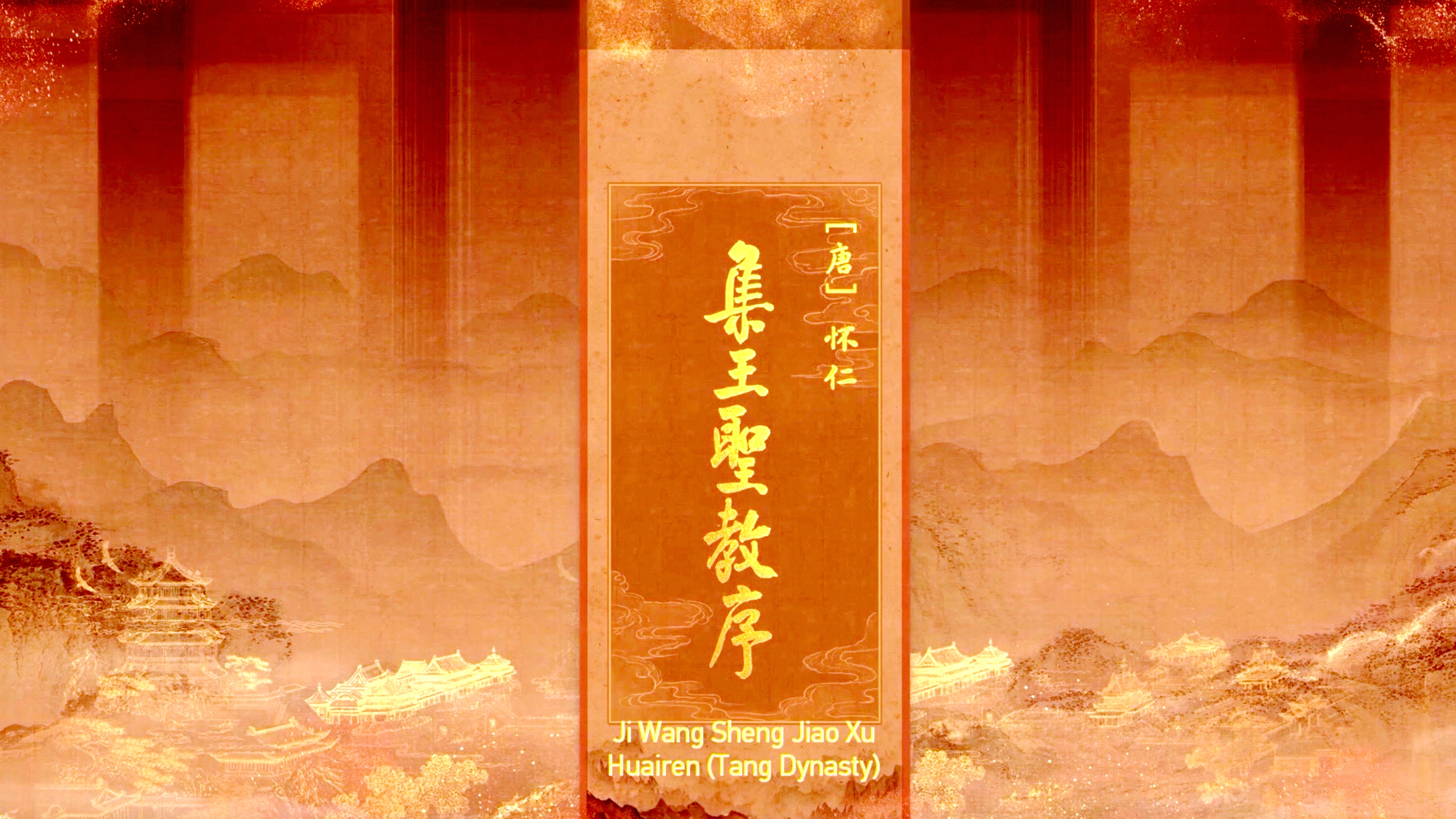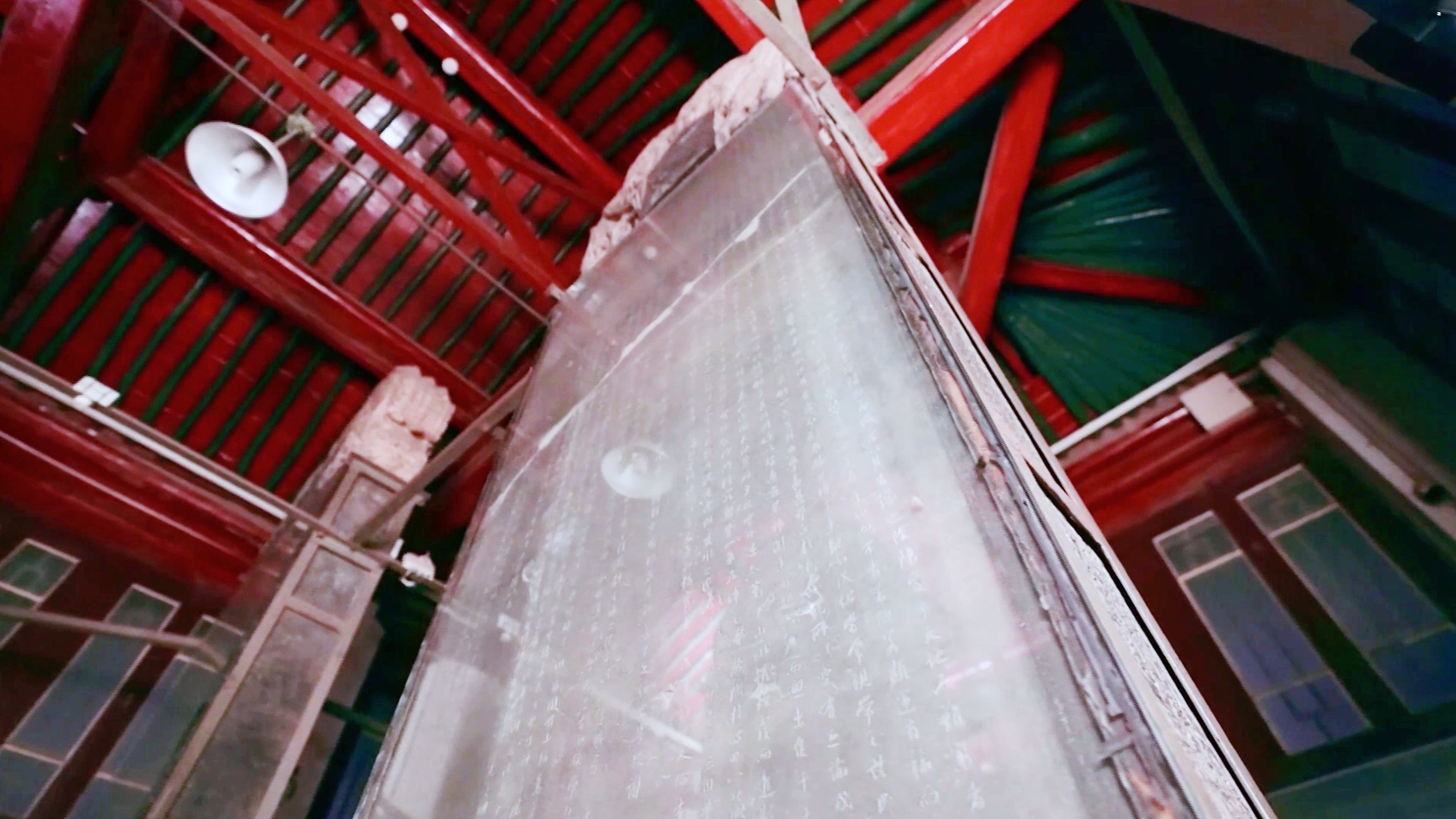Wang Xizhi, who lived during China's Eastern Jin Dynasty (317-420), was revered as the "sage of calligraphy" by later generations for his outstanding accomplishments in the art form. In appreciating and studying his calligraphy style, people in ancient China not only made facsimiles of his work but also inscribed stone tablets. Some of these works have been preserved to this day, including the well-known "Ji Wang Sheng Jiao Xu."
12:15

"Ji Wang Sheng Jiao Xu" means "The Preface to the Buddhist Scriptures Engraved on Stone in Wang Xizhi's Collated Characters." Here, "Ji Wang" refers to a collection of individual characters from Wang Xizhi's calligraphy. During the Tang Dynasty (618-907) over a thousand years ago, monk Huai Ren scoured the country for authentic calligraphy works by Wang Xizhi. He combined each individual character to form the "Sheng Jiao Xu" for the Tang Dynasty Emperor Taizong and carved it into a stele. This is the famous "Ji Wang Sheng Jiao Xu" stele, which later became a main source for studying Wang Xizhi's calligraphy style in later generations.
It was an immense undertaking for the monk Huai Ren to complete the stele more than a thousand years ago, said Shen Hao, a professor at the China Academy of Art.
"Huai Ren, along with more than 40 assistants, spent 25 years collecting 1,903 characters from numerous traces of Wang Xizhi's calligraphy. Emperor Taizong also provided strong support. It is recorded that he used treasury funds to purchase Wang Xizhi's calligraphic works from across the country, and collected as many as 2,290 sheets. If there were missing characters, he would spend large sums of money acquiring them. Therefore, this stele is also known as the "Thousand Gold Stele," said Shen.

The "Ji Wang Sheng Jiao Xu" stele is on display at Xi'an Beilin Museum in Shaanxi Province. /CGTN
The "Ji Wang Sheng Jiao Xu" stele is on display at Xi'an Beilin Museum in Shaanxi Province. /CGTN
The cultural importance of "Ji Wang Sheng Jiao Xu" was reinforced by Chen Zhongkang, a professor at the Chinese National Academy of Arts, who said that it is generally regarded as one of the most classical works in the history of calligraphy, especially running scripts. He added that since Wang Xizhi's original works had been largely lost, the compilation of the "Ji Wang Sheng Jiao Xu" was the most precise record of Wang Xizhi's calligraphy in existence.
The journey of collecting Wang Xizhi's calligraphy started in the Tang Dynasty and continued through the Song, Yuan, Ming, and Qing dynasties. Today, font designers are also collecting individual characters from Wang Xizhi's calligraphy to create a digital font library called "Wang Xizhi Running Script."

A font designer works to create a computer font library called "Wang Xizhi Running Script." /CGTN
A font designer works to create a computer font library called "Wang Xizhi Running Script." /CGTN
From selecting and combining characters to determining the structure and stroke design, font designers have been making great efforts to ensure the font library not only conforms to modern Chinese character standards but also authentically reflects Wang Xizhi's calligraphic style.
While Huai Ren's "Ji Wang Sheng Jiao Xu" has allowed Wang Xizhi's calligraphy to be passed down for the past 1,500 years, digital fonts have the potential to bring the "Wang Script" to every computer and every mobile phone in the world. It will eventually allow anyone interested in becoming acquainted with calligraphy to use it. In fact, the process of digitization may help to preserve ancient Chinese calligraphy forever.